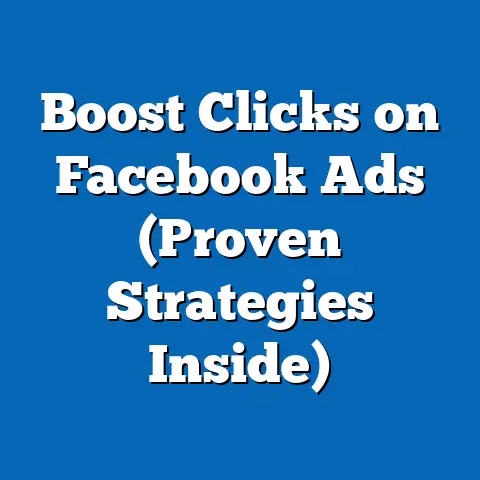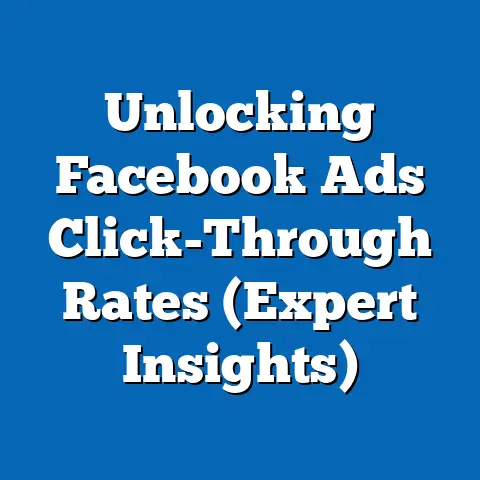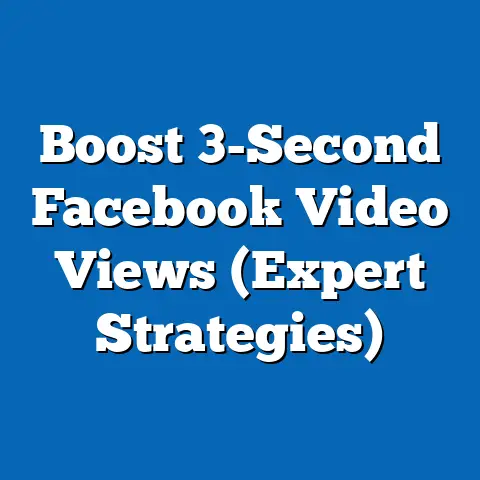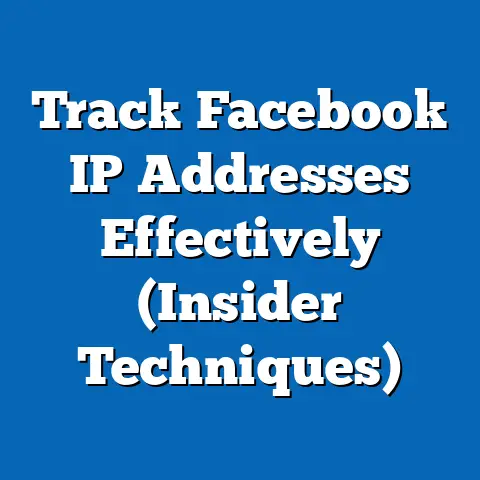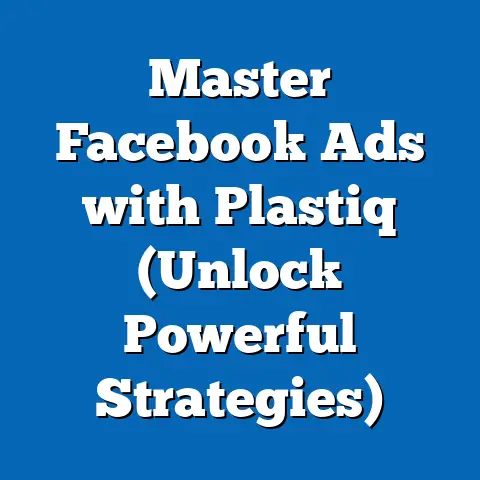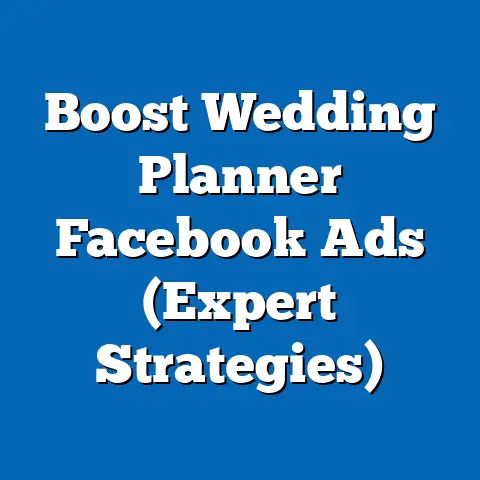High-Converting Facebook Ad Examples (Proven Strategies)
High-Converting Facebook Ad Examples: Proven Strategies to Boost Your ROI
Have you ever found yourself endlessly scrolling through your Facebook feed, mindlessly absorbing content, only to be jolted awake by an ad that seems to speak directly to you? You’re not alone! I’ve been there countless times, both as a consumer and as a marketer trying to crack the code of what makes an ad truly effective. Some ads effortlessly cut through the noise, while others fade into the digital background, unnoticed and unclicked.
In today’s digital marketing landscape, Facebook advertising remains a powerhouse, offering unparalleled reach and targeting capabilities. But, with great power comes great responsibility – and a lot of competition! To stand out in the crowded newsfeed, your ads need to be more than just pretty pictures and clever slogans. They need to be strategically crafted, deeply relevant, and laser-focused on your target audience.
1. Understanding the Basics of Facebook Advertising
Before we jump into the juicy examples, let’s establish a solid foundation. Facebook advertising is more than just throwing money at the platform and hoping for the best. It’s a complex ecosystem with its own set of rules, best practices, and nuances. Understanding these fundamentals is crucial for creating ads that not only get seen but also drive conversions.
Targeting Options: Reaching the Right People
One of Facebook’s greatest strengths is its incredibly granular targeting capabilities. I remember when I first started experimenting with Facebook ads, I was blown away by the sheer amount of data available. You can target users based on demographics (age, gender, location), interests (hobbies, pages they like), behaviors (purchase history, online activity), and even connections (friends of people who like your page).
Here are some key targeting options to consider:
- Core Audiences: This is the foundation of Facebook targeting, allowing you to define your audience based on demographics, interests, and behaviors.
- Custom Audiences: This allows you to upload your own customer data (email lists, phone numbers) to target existing customers or create lookalike audiences.
- Lookalike Audiences: This is where the magic happens! Facebook uses your existing customer data to find new users who share similar characteristics and behaviors. I’ve personally seen incredible results using lookalike audiences, often achieving significantly higher conversion rates than with core audiences alone.
- Saved Audiences: This allows you to save specific targeting parameters for use in future campaigns, saving you time and ensuring consistency.
Takeaway: Spend time meticulously defining your target audience. The more specific you are, the more relevant your ads will be, and the higher your conversion rates will be.
Ad Formats: Choosing the Right Canvas
Facebook offers a variety of ad formats to suit different objectives and creative styles. Each format has its own strengths and weaknesses, so it’s important to choose the one that best aligns with your message and target audience.
Here are some of the most popular ad formats:
- Image Ads: These are simple, yet effective, ads that feature a single image and accompanying text. They’re great for showcasing products or services in a visually appealing way.
- Video Ads: Video ads are incredibly engaging and can be used to tell stories, demonstrate products, or share testimonials. They tend to have higher engagement rates than image ads.
- Carousel Ads: These ads allow you to showcase multiple images or videos in a scrolling format. They’re ideal for showcasing a range of products or highlighting different features of a single product.
- Collection Ads: These ads are designed for e-commerce businesses and allow users to browse products directly within the ad. They’re a great way to drive traffic to your online store.
- Instant Experience Ads: These are full-screen, mobile-optimized ads that provide an immersive experience for users. They’re great for telling stories and showcasing your brand in a unique way.
- Lead Ads: Lead ads are designed to collect leads directly within Facebook. They pre-populate forms with users’ information, making it easy for them to sign up for your email list or request more information.
Takeaway: Experiment with different ad formats to see what resonates best with your target audience. Don’t be afraid to get creative and try new things!
The Facebook Algorithm: Working with the Machine
The Facebook algorithm, also known as EdgeRank, is the engine that determines which ads get shown to which users. It’s a constantly evolving beast, but understanding its core principles is essential for success.
Here are some key factors that influence the algorithm:
- Relevance: Facebook prioritizes ads that are relevant to users’ interests and behaviors. This is why targeting is so important.
- Engagement: Ads that generate high engagement (likes, comments, shares, clicks) are more likely to be shown to more users.
- Ad Quality: Facebook evaluates the quality of your ads based on factors like image quality, ad copy, and landing page experience.
- Bid Amount: The amount you bid for your ads also influences their reach. However, it’s not just about bidding the highest; it’s about bidding strategically based on your objectives and target audience.
Takeaway: Focus on creating high-quality, relevant ads that generate engagement. The more you work with the algorithm, the better your results will be.
Statistics on Facebook Ad Performance and ROI
To truly appreciate the power of Facebook advertising, let’s take a look at some key statistics:
- Reach: Facebook boasts over 2.9 billion monthly active users, making it the largest social media platform in the world.
- Engagement: On average, Facebook users spend 34 minutes per day on the platform.
- ROI: Studies have shown that businesses can achieve an average ROI of $4.30 for every $1 spent on Facebook ads.
- Conversion Rates: Facebook ads have an average conversion rate of 9.21% across all industries.
These numbers speak for themselves. Facebook advertising offers unparalleled reach, engagement, and ROI potential. However, to achieve these results, you need to have a clear understanding of the fundamentals and a strategic approach to ad creation.
2. Key Elements of High-Converting Facebook Ads
Now that we’ve covered the basics, let’s dive into the specific elements that make a Facebook ad truly high-converting. These are the ingredients that separate the winners from the losers, the ads that generate leads and sales from the ones that get ignored.
Attention-Grabbing Headlines: Hooking the Reader
In the crowded newsfeed, your headline is your first and often only chance to grab someone’s attention. It needs to be concise, compelling, and relevant to your target audience.
Here are some tips for crafting attention-grabbing headlines:
- Use Numbers: Numbers are naturally eye-catching and can add credibility to your claims. For example, “5 Proven Strategies to Boost Your Facebook Ad ROI.”
- Ask a Question: Questions can pique curiosity and encourage readers to click. For example, “Are You Making These Common Facebook Ad Mistakes?”
- Create a Sense of Urgency: Urgency can motivate readers to take action. For example, “Limited-Time Offer: Get 50% Off Our Best-Selling Product.”
- Highlight a Benefit: Focus on the value that your product or service provides. For example, “Finally, a Simple Way to Generate Leads with Facebook Ads.”
- Use Power Words: Power words are emotionally charged words that can evoke a strong response. For example, “Discover,” “Secret,” “Transform,” “Revolutionize.”
Example:
Let’s say you’re selling a weight loss program. Here are a few headline options:
- Weak: Weight Loss Program
- Better: Lose Weight Fast!
- Best: Lose 10 Pounds in 30 Days with Our Proven Weight Loss Program
Takeaway: Your headline is the most important part of your ad. Spend time crafting a headline that is both attention-grabbing and relevant to your target audience.
Engaging Visuals: Telling a Story
Visuals are the heart and soul of your Facebook ad. They’re what grab people’s attention and communicate your message in a visually appealing way.
Here are some tips for creating engaging visuals:
- Use High-Quality Images: Blurry or pixelated images are a big turnoff. Make sure your images are sharp, clear, and visually appealing.
- Use Bright Colors: Bright colors can help your ad stand out in the newsfeed.
- Show People: Images of people, especially smiling faces, can create a connection with your audience.
- Use Video: Video ads are incredibly engaging and can be used to tell stories, demonstrate products, or share testimonials.
- Keep it Simple: Don’t overcrowd your visuals with too much text or graphics.
Example:
Let’s say you’re selling a travel package to Hawaii. Here are a few visual options:
- Weak: A generic image of a beach.
- Better: A stunning photo of a couple enjoying a sunset on a Hawaiian beach.
- Best: A short video of a family having fun snorkeling in Hawaii, with upbeat music and text overlay highlighting the key features of the travel package.
Takeaway: Invest in high-quality visuals that tell a story and connect with your target audience on an emotional level.
Persuasive Copy: Speaking to Your Audience
Your ad copy is where you get to elaborate on your headline and visuals, and convince people to take action. It needs to be clear, concise, and persuasive.
Here are some tips for writing effective ad copy:
- Know Your Audience: Speak directly to your target audience’s needs, wants, and pain points.
- Highlight Benefits, Not Features: Focus on the value that your product or service provides, not just the technical specifications.
- Use Social Proof: Include testimonials, reviews, or case studies to build trust and credibility.
- Create a Sense of Scarcity: Scarcity can motivate people to take action. For example, “Limited quantities available!”
- Use a Conversational Tone: Write in a friendly, approachable tone that resonates with your audience.
Example:
Let’s say you’re selling a software that helps businesses automate their social media marketing. Here are a few copy options:
- Weak: Our software has a lot of features.
- Better: Our software automates your social media marketing.
- Best: Stop wasting time on social media! Our software automates your posting, scheduling, and analytics, so you can focus on growing your business.
Takeaway: Write persuasive ad copy that speaks directly to your target audience’s needs and highlights the benefits of your product or service.
Strong Call-to-Action (CTA): Telling People What to Do
Your call-to-action (CTA) is the final piece of the puzzle. It tells people exactly what you want them to do next. It needs to be clear, concise, and compelling.
Here are some tips for creating strong CTAs:
- Use Action Verbs: Use verbs that encourage action, such as “Shop Now,” “Learn More,” “Sign Up,” “Download,” “Get Started.”
- Make it Prominent: Your CTA should be visually prominent and easy to click.
- Create a Sense of Urgency: Urgency can motivate people to take action. For example, “Shop Now and Get Free Shipping!”
- Test Different CTAs: Experiment with different CTAs to see what performs best with your target audience.
Example:
Here are a few CTA options:
- Weak: Click Here
- Better: Learn More
- Best: Get Started Today!
Takeaway: Your CTA is the final nudge that encourages people to take action. Make it clear, concise, and compelling.
3. Proven Strategies from Successful Brands
Now, let’s put these key elements into practice by examining some real-world examples of successful Facebook ads from well-known brands. I’ll break down each case study, highlighting the strategies used and the results achieved.
Case Study 1: Dollar Shave Club – Humor and Relatability
Dollar Shave Club is a master of humor and relatability in their Facebook ads. They understand their target audience (men who are tired of overpriced razors) and speak to them in a funny, authentic way.
Ad Example:
Their ads often feature witty videos that poke fun at traditional shaving commercials and highlight the absurdity of spending a fortune on razors.
Key Strategies:
- Humor: They use humor to grab attention and make their brand more relatable.
- Relatability: They speak to the pain points of their target audience (overpriced razors, boring shaving commercials).
- Value Proposition: They clearly communicate their value proposition (high-quality razors at an affordable price).
- Strong CTA: Their CTAs are clear and concise, such as “Join the Club” or “Get Started.”
Results:
Dollar Shave Club’s humorous and relatable ads have helped them build a massive following and disrupt the traditional shaving industry.
Learning Points:
- Don’t be afraid to use humor in your ads, especially if it aligns with your brand personality.
- Focus on the pain points of your target audience and offer a solution.
- Clearly communicate your value proposition.
Case Study 2: Airbnb – Visual Storytelling and Inspiration
Airbnb excels at using visual storytelling to inspire wanderlust and showcase the unique experiences that their platform offers.
Ad Example:
Their ads often feature stunning photos and videos of unique properties in exotic locations.
Key Strategies:
- Visual Storytelling: They use visuals to tell a story and evoke emotions.
- Inspiration: They inspire wanderlust and encourage people to travel.
- Unique Properties: They showcase unique and interesting properties that differentiate them from traditional hotels.
- Targeted Messaging: They target users based on their travel interests and preferences.
Results:
Airbnb’s visually stunning and inspiring ads have helped them build a global brand and become a leader in the travel industry.
Learning Points:
- Use visuals to tell a story and evoke emotions.
- Inspire your audience and encourage them to dream.
- Highlight what makes your product or service unique.
Case Study 3: Charity: Water – Emotional Appeal and Social Impact
Charity: Water uses emotional appeal and social impact to connect with their audience and inspire them to donate.
Ad Example:
Their ads often feature powerful stories and images of people in developing countries who lack access to clean water.
Key Strategies:
- Emotional Appeal: They use emotional stories and images to connect with their audience on a personal level.
- Social Impact: They highlight the positive impact that their organization is making in the world.
- Transparency: They are transparent about how donations are used.
- Clear CTA: Their CTAs are clear and concise, such as “Donate Now” or “Learn More.”
Results:
Charity: Water’s emotionally compelling and impactful ads have helped them raise millions of dollars to provide clean water to people in need.
Learning Points:
- Use emotional appeal to connect with your audience on a personal level.
- Highlight the positive impact that your organization is making in the world.
- Be transparent about how donations are used.
4. Testing and Optimizing Your Facebook Ads
Creating high-converting Facebook ads is not a one-time event. It’s an ongoing process of testing, analyzing, and optimizing. You need to constantly experiment with different elements of your ads to see what performs best with your target audience.
A/B Testing: The Key to Optimization
A/B testing, also known as split testing, is the process of comparing two versions of an ad to see which one performs better. You can test different headlines, visuals, ad copy, CTAs, targeting options, and more.
Here’s how to implement A/B testing for your Facebook ads:
- Choose One Element to Test: Don’t try to test too many elements at once. Focus on testing one variable at a time to isolate the impact of that variable.
- Create Two Versions of Your Ad: Create two versions of your ad that are identical except for the element you’re testing.
- Run Your Ads: Run your ads for a specific period of time, such as a week or two.
- Analyze the Results: Analyze the results to see which version of your ad performed better.
- Implement the Winning Version: Implement the winning version of your ad and continue testing other elements.
Example:
Let’s say you want to test two different headlines:
- Version A: Lose Weight Fast!
- Version B: Lose 10 Pounds in 30 Days
Run both ads for a week and then analyze the results. If Version B generates more clicks and conversions, then implement Version B and continue testing other elements.
Takeaway: A/B testing is essential for optimizing your Facebook ads. Constantly experiment with different elements to see what performs best with your target audience.
Metrics to Track Ad Performance
To effectively optimize your Facebook ads, you need to track the right metrics. These metrics will provide valuable insights into how your ads are performing and what areas need improvement.
Here are some key metrics to track:
- Reach: The number of unique people who saw your ad.
- Impressions: The number of times your ad was displayed.
- Click-Through Rate (CTR): The percentage of people who clicked on your ad after seeing it.
- Cost Per Click (CPC): The average cost you paid for each click on your ad.
- Conversion Rate: The percentage of people who completed a desired action (e.g., purchase, sign-up) after clicking on your ad.
- Cost Per Conversion: The average cost you paid for each conversion.
- Return on Ad Spend (ROAS): The amount of revenue you generated for every dollar you spent on ads.
Takeaway: Track these key metrics to gain insights into your ad performance and identify areas for improvement.
Optimizing Ad Campaigns Based on Performance Analysis
Once you have data on your ad performance, you can start optimizing your campaigns to improve your results.
Here are some tips for optimizing your Facebook ad campaigns:
- Adjust Targeting: Refine your targeting options based on the demographics, interests, and behaviors of the users who are converting.
- Refine Creatives: Experiment with different headlines, visuals, and ad copy to see what resonates best with your target audience.
- Adjust Bids: Adjust your bids based on your performance data. If your ads are performing well, you can increase your bids to reach more people. If your ads are not performing well, you can decrease your bids to save money.
- Pause Underperforming Ads: Pause ads that are not performing well and focus on the ads that are generating the best results.
- Test New Ad Formats: Experiment with different ad formats to see what performs best with your target audience.
- Optimize Landing Page: Make sure your landing page is optimized for conversions. It should be clear, concise, and easy to navigate.
Takeaway: Continuously analyze your ad performance data and make adjustments to your campaigns to improve your results.
5. Common Mistakes to Avoid in Facebook Advertising
Even with a solid understanding of the fundamentals and a strategic approach to ad creation, it’s easy to make mistakes in Facebook advertising. Here are some common pitfalls to avoid:
- Poor Targeting: Targeting the wrong audience is one of the biggest mistakes you can make. Make sure you spend time meticulously defining your target audience.
- Low-Quality Visuals: Using blurry or pixelated images is a big turnoff. Make sure your visuals are high-quality and visually appealing.
- Unclear Ad Copy: Writing ad copy that is confusing or irrelevant is a waste of time. Make sure your ad copy is clear, concise, and persuasive.
- Weak CTA: Using a weak or unclear CTA will prevent people from taking action. Make sure your CTA is clear, concise, and compelling.
- Ignoring Mobile: The majority of Facebook users access the platform on their mobile devices. Make sure your ads are optimized for mobile.
- Not Tracking Results: Not tracking your results is like driving blind. Make sure you track your key metrics to gain insights into your ad performance.
- Not Testing: Not testing your ads is a missed opportunity. Make sure you A/B test different elements to see what performs best with your target audience.
Takeaway: Avoid these common mistakes to maximize your chances of success with Facebook advertising.
6. Future Trends in Facebook Advertising
The world of Facebook advertising is constantly evolving. New technologies, platforms, and trends are emerging all the time. To stay ahead of the curve, it’s important to keep an eye on the future.
Here are some emerging trends to watch out for:
- AI-Powered Advertising: Artificial intelligence (AI) is already playing a significant role in Facebook advertising, and its influence will only continue to grow. AI can be used to automate tasks, personalize ads, and optimize campaigns.
- Augmented Reality (AR) Ads: Augmented reality (AR) ads are immersive experiences that allow users to interact with products in a virtual environment. These ads are becoming increasingly popular, especially in the e-commerce industry.
- Video Content Dominance: Video content continues to dominate the digital landscape, and Facebook is no exception. Video ads are incredibly engaging and can be used to tell stories, demonstrate products, or share testimonials.
- Privacy-Focused Advertising: As privacy concerns continue to grow, Facebook is implementing new features and policies to protect user data. This will require advertisers to be more transparent about how they collect and use data.
- Metaverse Advertising: As the metaverse continues to develop, Facebook (now Meta) is exploring new advertising opportunities within virtual worlds. This could include virtual storefronts, sponsored events, and interactive ads.
Takeaway: Stay informed about emerging trends in Facebook advertising to adapt your strategies and stay ahead of the competition.
Remember, creating successful Facebook ads is not about luck; it’s about understanding the fundamentals, crafting compelling creatives, targeting the right audience, and continuously testing and optimizing.
Here are the key takeaways from this article:
- Understand the Basics: Familiarize yourself with Facebook’s targeting options, ad formats, and the algorithm.
- Craft Compelling Creatives: Create attention-grabbing headlines, engaging visuals, persuasive ad copy, and strong CTAs.
- Learn from Successful Brands: Analyze successful Facebook ad examples from well-known brands and identify the strategies they used.
- Test and Optimize: Implement A/B testing to continuously improve your ad performance.
- Avoid Common Mistakes: Be aware of the common pitfalls in Facebook advertising and take steps to avoid them.
- Stay Informed: Keep an eye on emerging trends in Facebook advertising to adapt your strategies and stay ahead of the competition.
Now it’s your turn! Take these insights and apply them to your own Facebook ad campaigns. Don’t be afraid to experiment, test, and learn. The more you practice, the better you’ll become at creating high-converting Facebook ads that drive real results.
I encourage you to share your own experiences with Facebook ads in the comments below. What strategies have worked for you? What challenges have you faced? Your insights can help others on their journey to Facebook advertising success.
And if you’re interested in learning more about Facebook advertising, I encourage you to seek further information from reputable sources, such as Facebook’s official documentation, industry blogs, and online courses.
Thank you for reading! I wish you all the best in your Facebook advertising endeavors. May your ads be high-converting and your ROI be through the roof!

